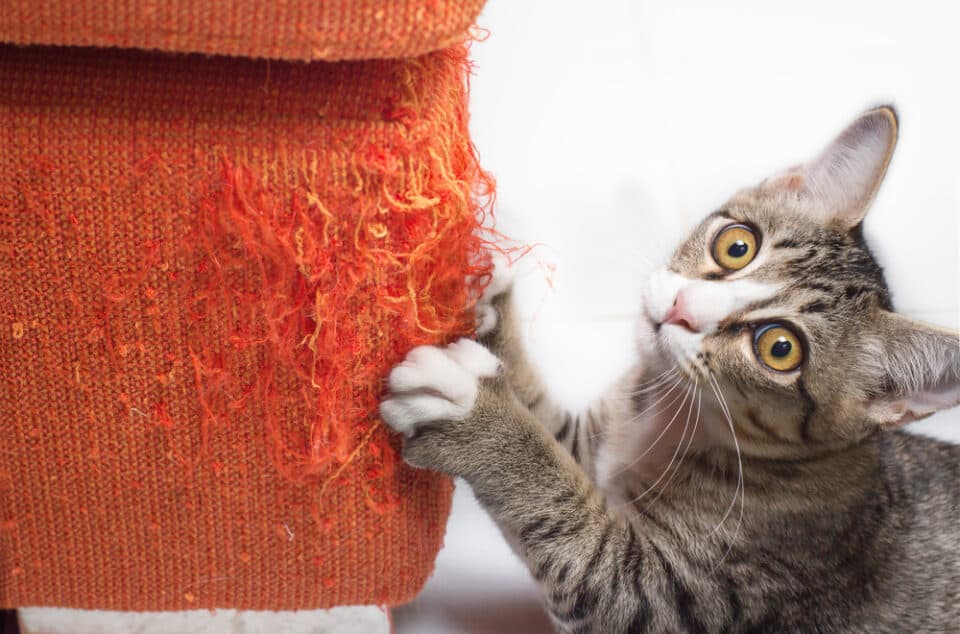All products and services on Project PAWS are independently selected by our editors, contributors, and veterinary experts. This post contains affiliate links. As an Amazon Associate I earn from qualifying purchases.To learn more, view my disclosure policy.
Last Updated on October 29, 2020 by Aimee
Scratch This, Not That: Understanding Why Cats Like To Scratch. Cats like to scratch their nails on many different surfaces, this is a sign of a healthy, happy kitty. The main reason is because scratching is an instinctive behavior, both domestic and wild cats scratch on many different things. How this instinctive behavior manifests itself are fascinating and knowing the why always helps to change unwanted scratching.
Scratching can frequently be territorial, letting other cats know of their presence by leaving visual and scent marks. Cats mark territory by scratching tree trunks, posts, the corners of buildings or your furniture. Some cats like to scratch horizontally and/or vertically, sometimes they scratch on rugs or carpet or a horizontal piece of wood or cardboard.
When Does it Occur?
When scratching behavior happens may be a clue to what purpose that particular scratch has, although the reasons are usually not mutually exclusive. For example, cats frequently scratch after naps allowing the cat to stretch out tight muscles in the body and legs. Scratching while stretching after a nice nap does multiple things. Cats are nothing if not efficient. Some cats scratch during greeting with you. Another purpose to scratching is that it removes the outer sheath of its nail to keep them clean of dirt and feces and nails sharp and efficient.
Understanding that cats need to scratch, we can use this to prevent or stop damage from cat scratching. When dealing with cats there is a reason for the behavior and the key to preventing unwanted behavior is understanding what it is happening. There are different approaches to stopping the unwanted scratching and that once again depends the “why” the cat is being destructive.
The Environmental Approach
You can change the environment, making it difficult for your cat to scratch inappropriate items. The environmental approach involves offering the cat an attractive scratching post and making other areas unattractive. Attractive to the cat and attractive to you may be a different definition so make sure you are looking at the post from your cat’s point of view. Make sure it has the things that will attract your cat to use it. The structure, texture and location of the post are critical to getting the cat to use it. Make sure an upright post is stable so it will not tip over. Observe your cat’s scratching behavior to determine which type of surface it prefers.
When choosing an upright post, select one with a scratching surface that extends three feet (36”) or more above the base. The size of the cat should determine the size of the post: smaller cats need smaller posts, while larger cats need larger posts. For horizontal scratching, offer a board that is 6 to 8 inches wide and at least 12 to 16 inches long.
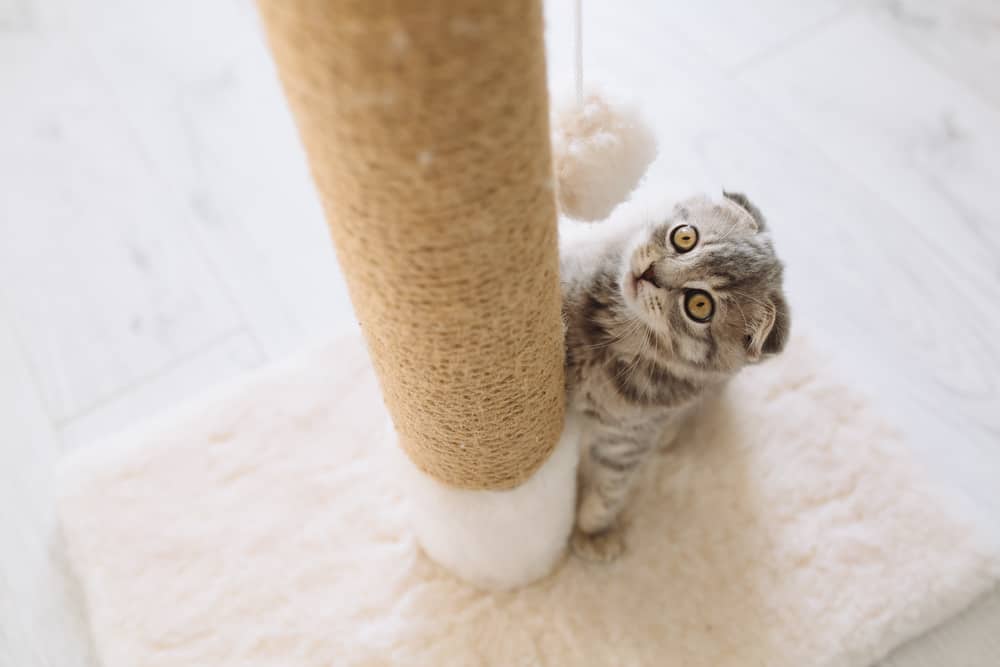
Cats seem to prefer scratching posts where the material is quite shredded and worn. This makes sense when you remember that a major function of scratching is to leave a highly visible mark-the more tattered the covering, the more visible it is. Because cats tend to prefer worn post coverings to new ones, don’t replace the coverings too soon. Leave the covering until it falls off or the cat loses interest in the post. The least preferred material seems to be a tightly woven, nubby fabric.
Take into account the location of the post is important. Cats like to scratch soon after waking up, so place the post near the sleeping area. Cats often scratch in conspicuous places, which may explain 3 why your cat prefers to scratch the arm of the couch rather than a post placed in a rarely used back room. In this case, placing a post near highly visible, heavily traveled areas may help modify the behavior. To divert your cat from an inappropriate area, place a scratching post in front of the object that is already being scratched.
Some cats seem to scratch posts as part of a greeting ritual with people. In this case, locating posts near doors may be helpful. In general, cats scratch in several locations, so having several posts is a good idea, especially in multi-cat households. You can break established scratching habits with consistent, diligent attempts. The key is not to try to change or prevent the behavior but rather to change the preference for the location or surface for scratching.
What a cat wants
In general, preferences are most easily changed by making the new location or surface-the post-as attractive as possible while making the old location or surface-the damaged property-as unattractive as possible.
Make the no scratch furniture unattractive for the cat to scratch. Cover it with something unpleasant to scratch, such as a plastic rug runner, or something with a different texture, such as a nubby fabric. Then cover the post with something attractive, such as a loose woven fabric, and place it directly in front of the damaged area. If the location is inconvenient, gradually move the post to another location once the cat is scratching reliably.
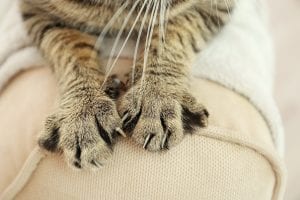
Behavioral Approach
Along with environmental changes you can also use the behavioral approach. A cat doesn’t necessarily scratch a post simply because it is there. The cat may need encouragement. This does not mean you should take your cat to the post and forcibly drag the animal’s claws over the covering. Some people advocate this approach, believing the experience of scratching the post or the scent marks left on the post from scratching will attract the cat back in the future.
If you frighten the cat with a forceful experience, however, the cat will learn to avoid the post as well as you. You should make the scratching experience pleasant by using encouragement. You can encourage your cat to scratch by dangling a toy or a piece of string on the post. As the cat attempts to grab the toy, it may be encouraged to scratch.
Rewarding spontaneous scratching on the post with praise, petting or a tasty tidbit can help, too. Finally, you may encourage your cat to scratch the post by making scratching movements against the post as the cat watches. It may imitate your behavior.
Punishing scratching behavior is rarely successful in stopping it. If you catch your cat in the act of scratching an inappropriate object, you can stop the behavior by gently take the cat to its scratching post and encourage it to scratch using the techniques described above.
Modifications of the Claws
If environmental and behavioral approaches do not stop damage to property, you may need to alter your cat’s claws. The easiest and most humane way to do so is to regularly trim the cat’s claws. Blunt claws do less damage than sharp ones. Trim the claws about once a week, and always avoid the blood vessels and nerves in the base of the claws so you do not injure the cat. If you aren’t sure how to trim your cat’s claws, ask your veterinarian to show you.
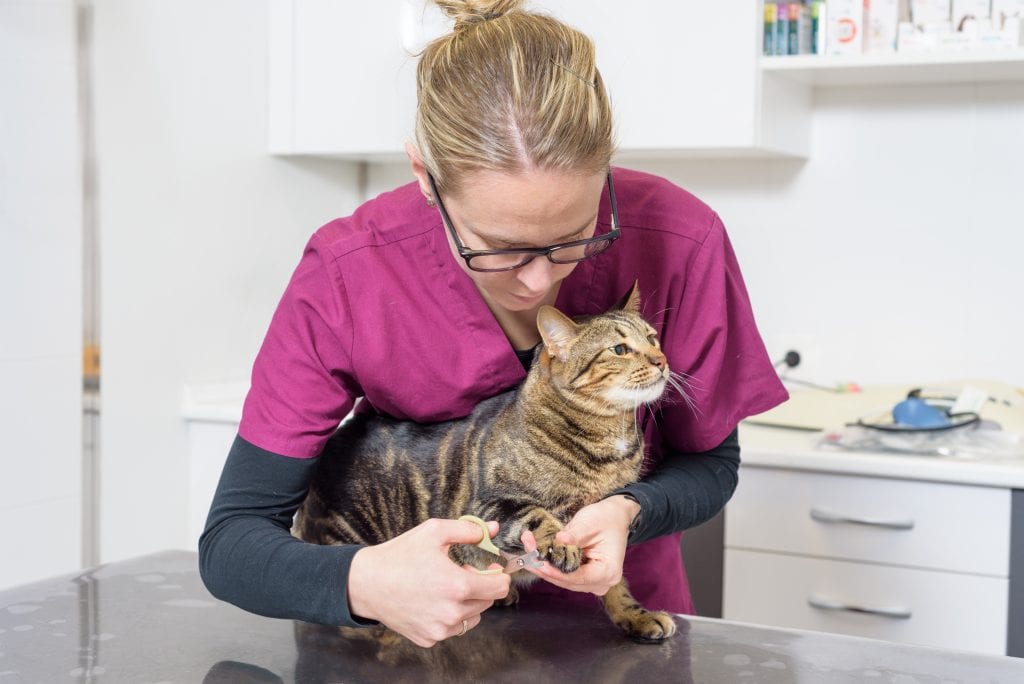
Another option is to apply soft plastic coverings, such as Soft Paws, to the claws. The coverings reduce damage, are safe for cats and attach easily to claws with a nontoxic adhesive. The only disadvantage is that the coverings fall off with the claw sheaths every few weeks and must be replaced. If you’re interested in this option, talk to your veterinarian.
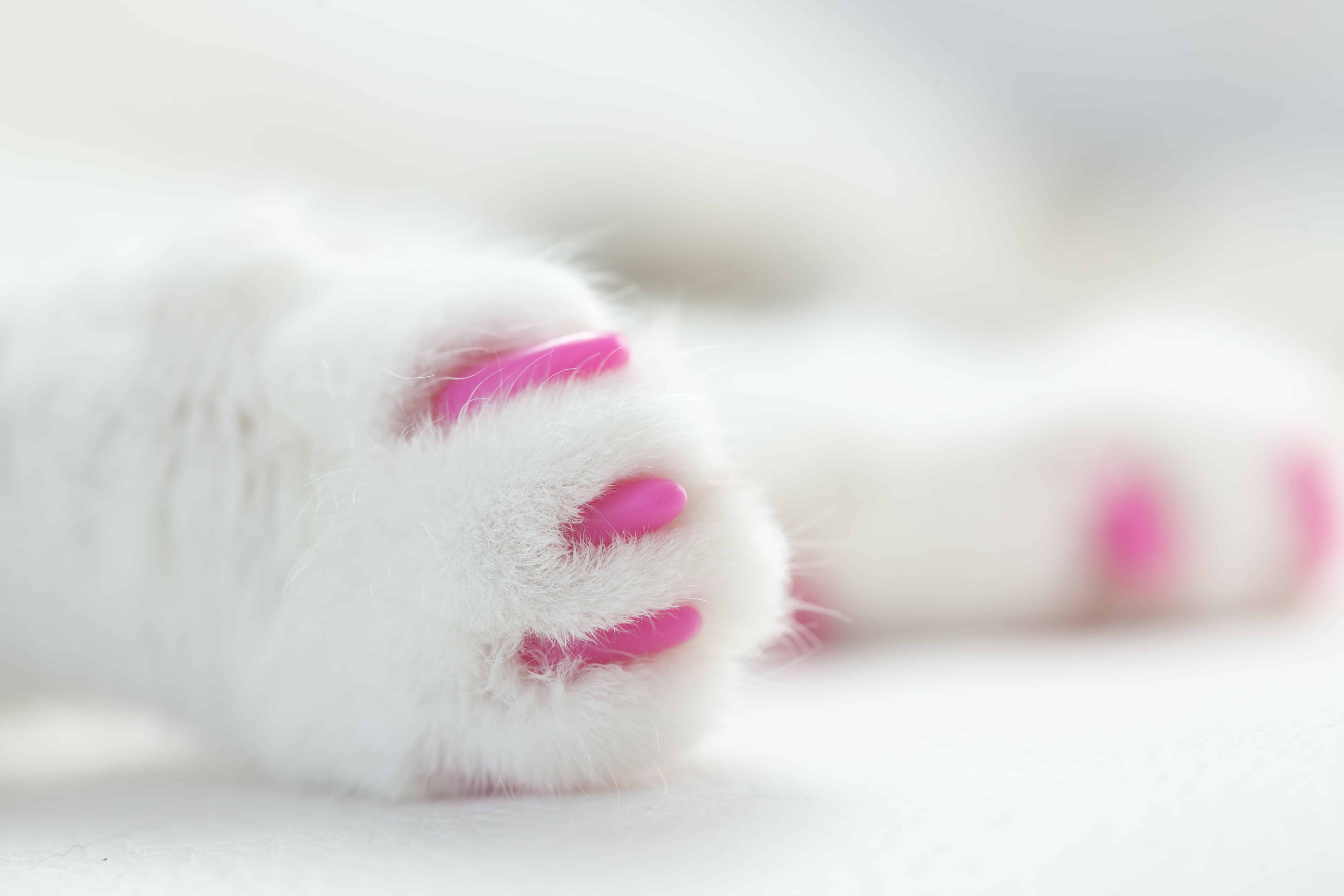
Do Not Declaw Your Cat
Declawing reduces you cats ability to defend itself against predators. Declawing is a painful procedure that involves removing a digit of your cats toe. The long term side affects include constant pain and urine marking.
Edited by Aimee Stock

